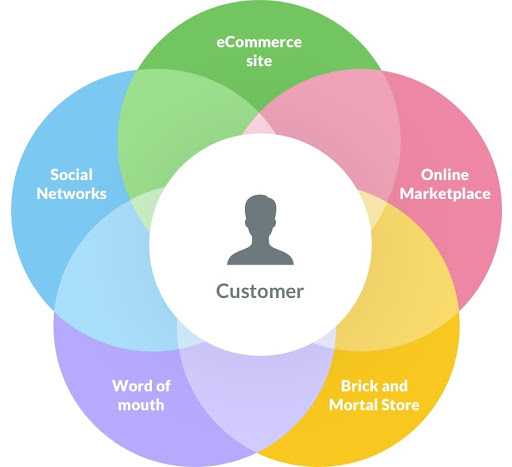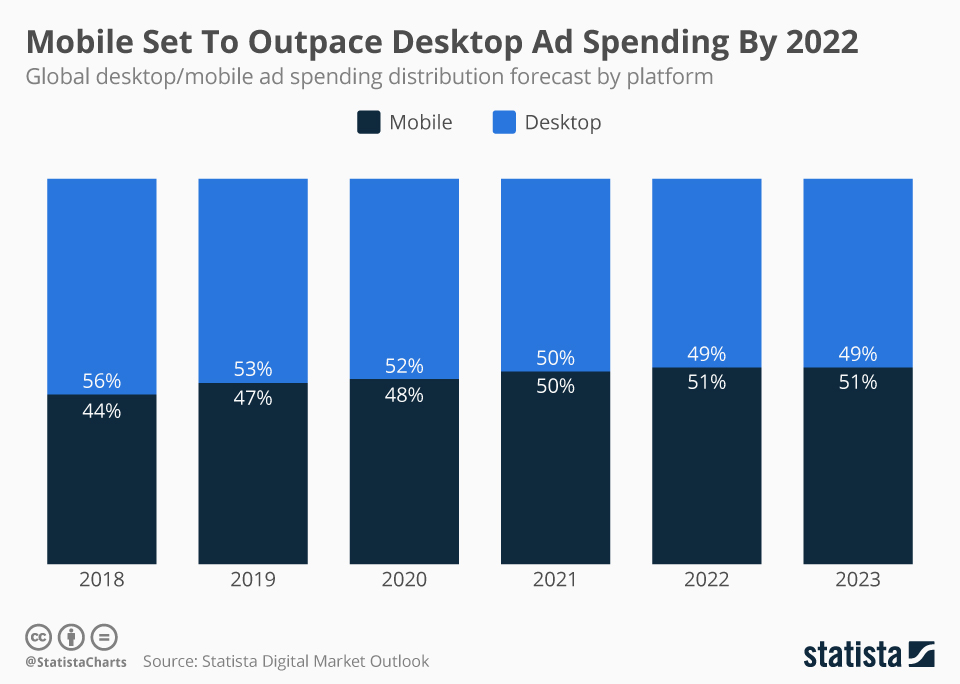There’s an age-old saying in business that ‘the customer is always right’. While many businesses have closed their storefront doors and turned to online empires instead, the phrase still rings true.
It’s the customer who keeps the business ticking, no matter whether they’re shopping in person or browsing online. Several industries have seen their operations move to the online world, propelled by customer demand.
This isn’t always good news as it can bring increased competition. Although there’s plenty of competition in a shopping mall for a clothing brand, there are far more competitors online. SMB Facebook marketing and ads are an option to boost visibility online, but this doesn’t help the customer experience.
So, what’s the key to loyal, returning customers who support your brand? An omnichannel eCommerce marketing strategy, of course.
What makes a good Omnichannel eCommerce strategy?
A good omnichannel eCommerce strategy should focus on the user experience. Continuity is key here. This differs from traditional marketing techniques, where each channel is optimized in its own right, managing sales pipeline processes.
Instead, an omnichannel eCommerce strategy should bring together every aspect of the business. From stores to apps and online shopping, the user experience should be consistent across all areas. This is why it’s referred to as ‘omnis’ – the Latin meaning for the word ‘all’. It literally covers all areas.
What is Omnichannel marketing?
Marketing has evolved at a rapid rate in such a short space of time. Consumers expect more from businesses. This makes it an important component of your omnichannel eCommerce strategy.
Customers like to contact a company through various means: email, Facebook Messenger, Instagram direct message, social media comments, live chats, WhatsApp, and business messaging. No longer are they content with listening to hold music for hours to get in contact with customer services. This shift to convenience being key has left businesses scrambling to ensure customers are looked after wherever they are.

With good customer service comes customer loyalty, and this can be a key part of your omnichannel eCommerce strategy. The diagram above shows all the ways in which you can access your customer with omnichannel marketing. At every point, there’s an opportunity to promote your service or product.
It’s all about the customer journey and the convenience of it all. If you’re a streetwear brand without an Instagram account or you’re a brunch cafe without your menu online, you’re doing it wrong.
In addition, if you are running a manufacturing-based business, essential to its success is effective and efficient inventory management and production with the manufacturing software. Forward-thinking manufacturers invest in a bill of materials software that enables real-time production, planning, scheduling and materials management
4 Steps to creating an engaging Omnichannel eCommerce strategy
Want to try and improve your omnichannel eCommerce user experience? Here are 4 key ways to optimize customer experiences.
1. Ensure Your Site is Mobile Friendly
Now, more than ever, consumers are glued to their phones. Millennials are more likely to shop online on their phone than at a desktop. Moreover, many shop owners also make an app for their customers’ better experience on mobile.
Advertisers are catching onto this. They’re now allocating more of their budget to mobile phone ads vs desktop ads.

It’s clear to see that over the next few years, experts believe consumer behavior will shift.
Even now, 57% of users won’t recommend a company to their friend if they believe the mobile site is poorly designed. Customer referrals, trust badges, and reviews are a very important part of your business reputation. If a customer doesn’t feel like they can recommend your product or service because your mobile site isn’t up to scratch, you need to change it.
This could start with the way your mobile site is laid out. Is it easy to navigate? Is the content clear and concise? Does it load quickly?
Sometimes something as simple as a dropdown box not being in the right place can ruin the user experience, and cause the user to abandon their shop. Too many pop-ups can also turn the user away, and not enough pop-ups and banners can mean engagement falls. Try to create the perfect balance.
2. Introduce Live Chats
Customers appreciate fast response times. For example, if you keep a customer waiting and they have a complaint, it’s likely their frustration will escalate with every minute they are kept on hold. According to a study by The Social Habit, when trying to contact a company via their social media, 32% of people expect a response within 30 minutes. Further to this, 42% of people expect a response from the company within 60 minutes.
This constant need for immediate attention may require you to invest in more resources, but it will be worth it when you have an improved ROI.
You’ve most likely come across live chat customer services, particularly if you like to do your shopping online. The most popular choices out there feature a real person at the other side of the screen, as opposed to an automated customer support.
Similarly, providing a number to text is one of the newer ways to encourage customers to get in touch. Shopify has a number of plugins that can add to the omnichannel customer experience. If your current eCommerce platform doesn’t, LitExtension can help you migrate to a service that does. You can also offer virtual phone service to act as a hotline when customers need your help urgently.
3. Invest in Apps
An app isn’t just convenient for the customer to keep on their phones, it’s also a way to improve your omnichannel eCommerce strategy. This is because it can provide a look into a customer’s journey to the eCommerce checkout page. You can discover the places where the customer is engaging the most, see what repeat purchases they make and if they’re likely to utilize discount codes.
Let’s look at an example. Clothing giants H&M have invested in their own app. This app gives exclusive offers to customers, features all the latest H&M news, and doubles up as a loyalty card. All of the perks it describes come with being an H&M member.
When users head to the checkout at an H&M shop, the app is always upsold by the cashier, and they even get a discount if they join there and then.

The app should relate to your website, while still remaining a good standalone tool. For example, ASOS advertises its app on its website. If users download the app and use a code from the ASOS website homepage, they’ll receive money off. This isn’t designed to move all website traffic to the app, rather ensure you’ve got multiple points of access to customers.
Not only this, but it’s also another form of contact for the customer to you. Integrate your live chat services with your app, so there’s another platform for users to contact customer support with any questions or complaints.
4. Be a Global Company With Local Content
If you live in London and you visit a flagship clothing store, expect to see the words “Hello London” sprawled across the entrance. This immediately feels more personalized to the consumer. An online shopping experience should be similar.
When you visit the clothing brand Zara’s website, it invites you to select your country. This is so it can tailor your currency and language. It allows for an easier user experience, as it feels as though the website has been customized just for them.
Even the clothing options differ from country to country, with the clothing selection on the homepage cleverly selected to the user’s country’s preferences. What consumers want in Tokyo can be different to what they want in London. It’s all about being local.

Customers even see reviews in their language or translate others. You should also ensure that your customer service contacts are personalized for each country. One email address for the whole of Europe is not enough!
Ramp up your IVR software, invest in a dedicated team of customer service professionals, and show your customers that you care for their needs, even as a global brand. Small details like this can make a big difference to the user experience and are vitally important in your omnichannel eCommerce strategy.
Implementing Your Omnichannel Ecommerce Strategy
There’s no time like the present. Many business owners now recognize that an omnichannel customer experience is a way forward. The very nature of the way people shop is changing, and businesses need to be one step ahead.
So, if your in-house marketing team needs a little guidance, ask for some help from a team of omnichannel marketing experts. Not every marketing team is set up for omnichannel integration, so be willing to work with others for the best results. You don’t even need to be in the same room. Simply invest in a cloud-based phone system for conference calls and you’re good to go.
Lastly, keep in mind that it’s all about making the customer journey convenient. There should be consistency between your various channels, including social media. If you’re not offering omnichannel customer service, you could be losing out.